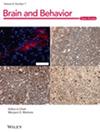Resting-State Functional Connectivity of Sensorimotor and Default Mode Networks and Lower Limb Performance in Chronic Stroke: A Cross-Sectional Study
Abstract
Introduction
Stroke disrupts functional brain connectivity, yet how this relates to lower limb motor and sensory abilities is not well understood. Greater knowledge of movement-related brain connectivity can aide in the development of better interventions for recovery after stroke. Our objective was to evaluate the relationship between lower limb performance and resting-state functional connectivity (rsFC) of large-scale brain networks for individuals with chronic motor deficits (> 6 months) after stroke.
Methods
Resting-state functional magnetic resonance imaging and lower limb clinical measures were collected for 37 individuals. Regions of interest (ROI)-to-ROI connectivity analysis was conducted for cortical sensorimotor network (SMN) (cortical SMN), SMN with both cortical and subcortical ROIs (SMN), and default mode network (DMN). Relationship of ROI–ROI connectivity and clinical measures or lesion load was assessed using general linear models. Graph theory metrics (global efficiency, clustering coefficient, and betweenness centrality) were related to clinical measures using elastic nets analysis.
Results
Greater connectivity between several SMN and DMN ROI pairs was associated with better gait speed, Timed-Up-and-Go score, and monofilament perception. The majority of ROI pairs showing statistically significant relationship with clinical measures were interhemispheric, non-homologous, and cortical-to-subcortical. Elastic net analysis for graph theory metrics revealed complexity and multi-directionality of the relationship of the individual ROIs to clinical outcomes and lesion load. There were unique sets of ROIs associated with each clinical measure for different graph metrics.
Conclusions
rsFC between specific ROIs within SMN and DMN are related to lower limb performance. Non-homologous interhemispheric ROI-to-ROI connectivity was featured in the analysis. Graph theory analysis demonstrates the complex role that an individual ROI has in relation to sensorimotor function of lower extremity.
Trial Registration
Clinicialtrials.gov registration number NCT03666533


 求助内容:
求助内容: 应助结果提醒方式:
应助结果提醒方式:


